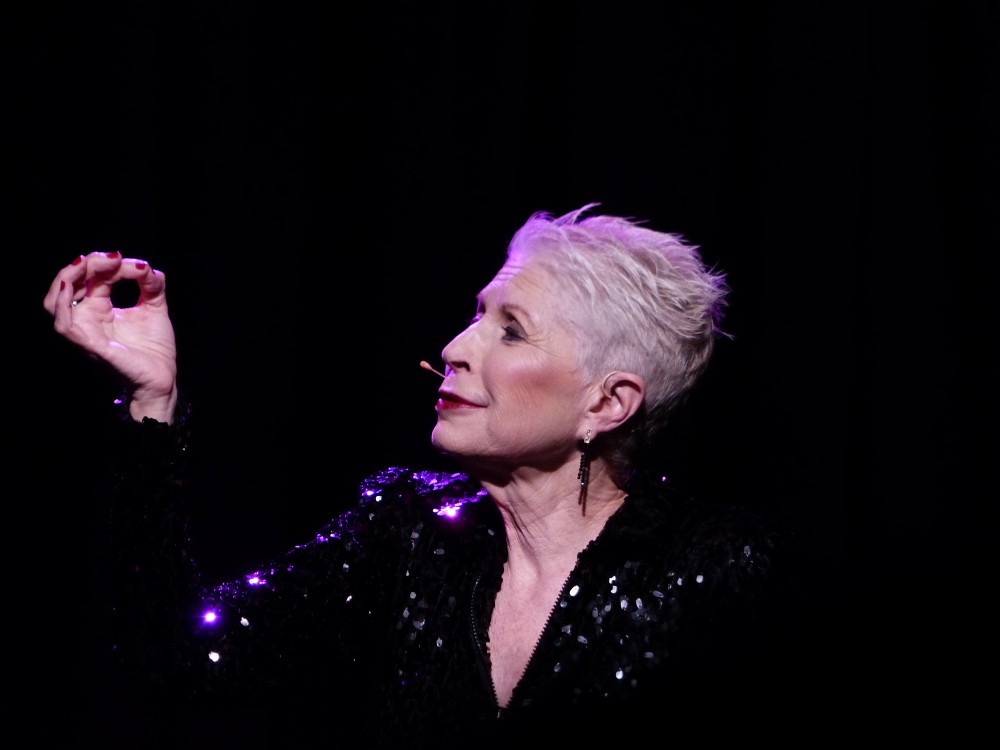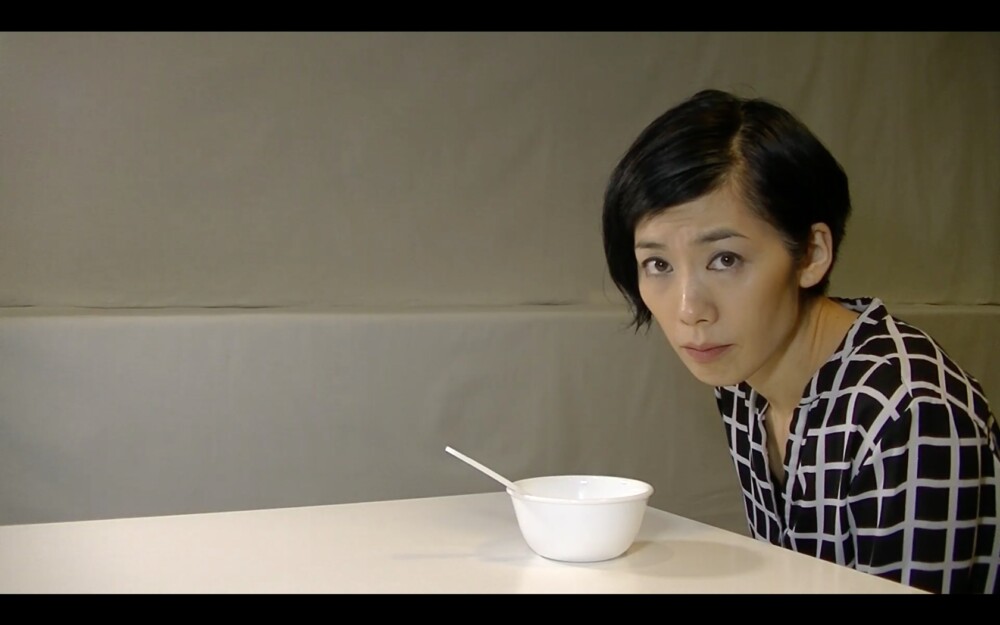Finding Inspiration
By Marcina Zaccaria
Director Daniel Fish and Designer Jim Findlay investigate the text of Three Sisters using videography and pre-recorded sound in Who Left This Fork Here at Baryshnikov Arts Center.
With two video cameras and a sort of cosmic sound track, the production is a fusion of sensibilities. With deep regard for emotion, an older actress sits in counterpoint to a younger artist. She holds a particularly striking extreme close-up.
After facing the laborious task of carrying squares for a dance floor, Marianne Rendon (understudying the lead role usually performed by Auden Thornton), considers the task that is in front of her. With all the determination of a performance artist, she places birthday cakes over the wide, black marley on stage. Then, she takes out a drill, aligns two sawhorses, and builds a platform for a cake display. She cuts out a circle in the center with the drill. Carefully, slowly, she piles on the birthday cakes. After making stack of cakes with mathematical certainty, she bursts through the center of the cakes (placed at waist height) from the ground level. Beginning a performance routine reminiscent of Karen Finley, she begins smearing the cake over her gymnast costume. She presents to the audience, her arms high in the air. Later, she descends through the hole she drilled, eying a camera above her.
As Fish and Findlay (The Source, BAM Next Wave 2014) and the three performers search for depth of sentiment in Anton Chekhov’s Three Sisters, they look towards a new day. They imagine it from many sides, utilizing many angles, maintaining their advantage. Who Left This Fork Here asks what insights can be gleaned after the intensity of repetition. The jogging figure on the perimeters of the stage doesn’t command a camera and keeps our eye moving. Meanwhile, the other two actors rely on the camera to tell their story, and the audience is asked to contemplate still images and movement.
If the lines of age on a face tell all, perhaps the portrait stage center encompasses the emotional life of all three female characters. As the actors withstand physical endurance tests, they struggle with finding newness. However, the intersection of words and movement never really give way to the next layer of meaning. Throughout the 70 minute performance, the hollow sense felt from this show doesn’t seem to illuminate Chekhov’s story.
Is big data the problem or is the problem the randomness that we experience when what we see and feel doesn’t add? The cameras, the sound, the florescent lights placed randomly on the floor set the stage for a story of hopefulness and aspiration. The need to see deeply with a lens is also inherent in this drama. In fact, the cameras were the most uncompromising part of Jim Findlay’s design.
Though it is great to see developmental work (this piece was developed in during two residencies at BAC in 2012 and 2014), Who Left This Fork Here falls short of a physical theater that builds a bridge to understanding. There needed to be more structured text to drive this story home, and bring this event to another level.
Who Left This Fork Here played at the Baryshnikov Arts Center from December 9 – 12 at the Howard Gilman Performance Space.























